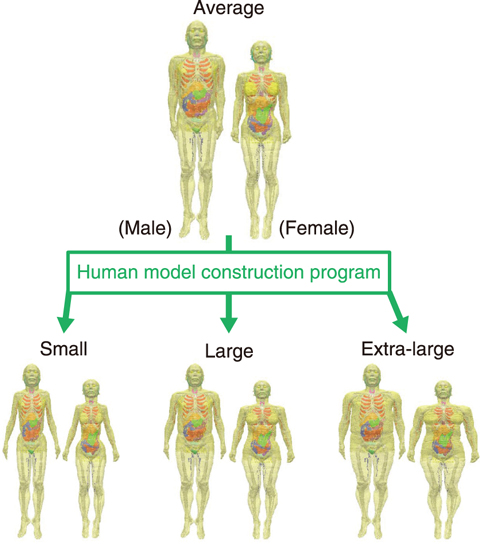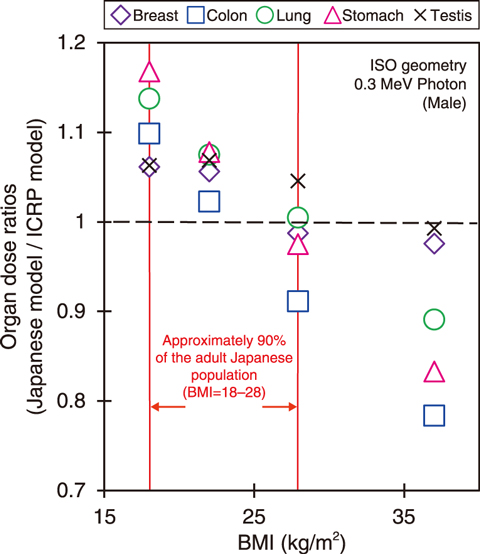
Fig.4-11 Construction of Japanese male (left) and female (right) models by using the developed human model construction program

Fig.4-12 Comparison of organ doses due to external photon irradiation between Japanese models with various physiques (JM) and the average CM recommended by ICRP
Exposure dose, which is an index indicating the effects of radiation on a human, is evaluated by the computer simulation. In computer simulation, the human model (model), which represent physiques and organ shapes of human on computer, are utilized. In dose assessment for medical exposures and epidemiological studies, the detailed exposure conditions have to be taken into account. Therefore, this study developed a practical construct technique for models capable of assessing exposure doses against Japanese with various physiques. The developed technique was then used to validate the applicability of the exposure dose to organs (organ dose) recommended by the International Commission on Radiological Protection (ICRP) to dose assessments for the purposes of radiation protection in Japan (e.g., operation plan preparation for radiation facilities).
In recent years, anatomical correct models were constructed by processing medical images of actual persons. Here, we devised a new technique for model construction. The devised technique enables us to numerically represent a human’s body surface shape and to properly decide organ arrangement by using information about perimeters in body (e.g., chest), which is closely related to the body mass index (BMI). An automatic model construction program was thus developed by applying the devised technique. Thus, models with various physiques can be easily constructed on the basis of average adult male and female Japanese models previously developed at JAEA in an extremely shorter period of time compared to conventional methods (Fig.4-11), without acquiring new medical images. A model series covering the physiques of most adult Japanese (JM) were constructed using the developed program.
We validated the applicability of the organ doses based on the average Caucasian model (CM) recommended by ICRP to Japanese for the radiation protection purposes. The organ doses to external photons using CM and JM under various irradiation geometries and energies were calculated and compared. The resulting organ doses for CM and JM at varying BMIs with an isotropic (ISO) geometry at an energy of 0.3 MeV are compared in Fig.4-12. ISO geometry approximates irradiation from a large cloud of radioactive gas to human. The resulting doses to the lung, stomach and colon varied depending on physiques due to the shielding effect of subcutaneous adipose and muscle tissues. However, the doses to most organs for the JM with physiques (BMI: 18-28) including about 90% of the adult Japanese population agreed with those for CM within 10%. Thus, the impact of physique variations of adult Japanese on dose assessment are limited, indicating that the organ doses provided by ICRP are applicable for external dose assessment for radiation protection purposes in Japan.